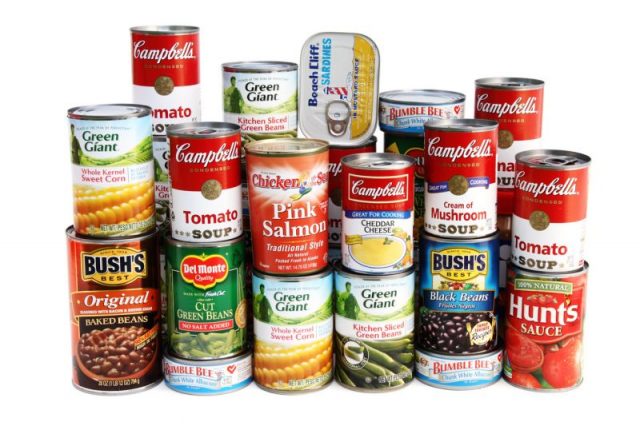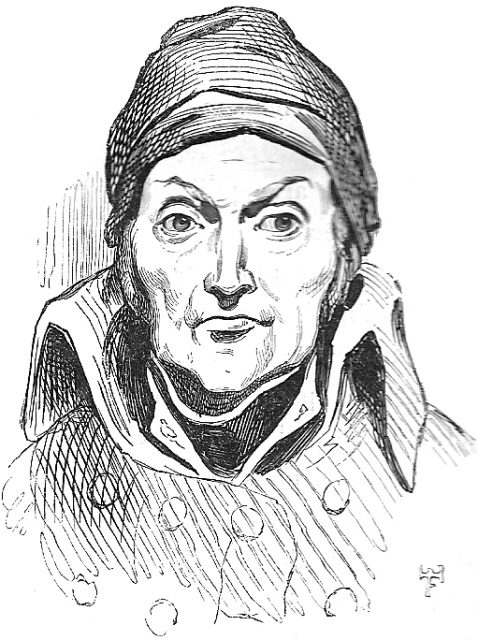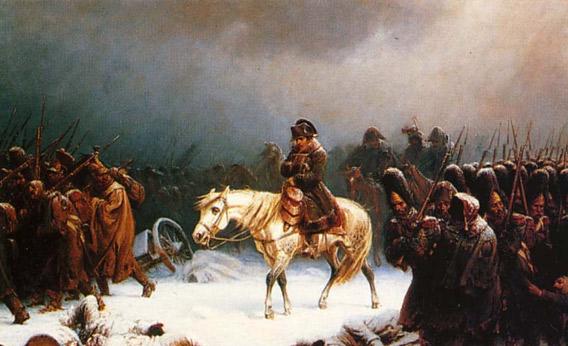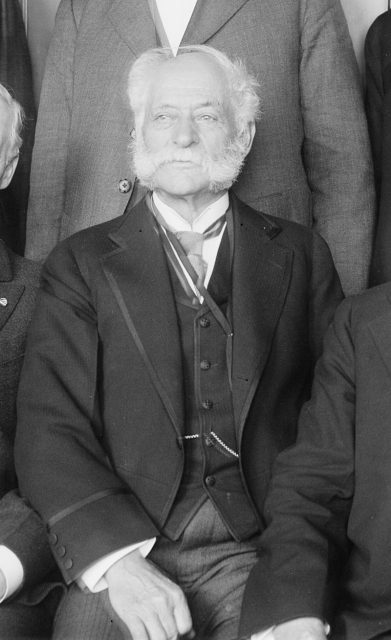How many cans of food do you have in your pantry? Many Americans rely on canned tuna, crushed tomatoes, beans, or chicken noodle soup for quick and easy meals. For that, you can thank a most unlikely benefactor—Napoleon Bonaparte. Or more specifically, a food-preservation contest he launched, and the Parisian confectioner who won the prize.
Before the advent of modern manufacturing methods, people preserved food however they could. Residents of cold climates froze their food; desert dwellers dried theirs in the hot sun and wind. Evidence exists that people in the Middle East dried food as far back as 12,000 BC, according to the National Center for Home Food Preservation. The Romans dried fruit. In colder areas of the Americas, people kept food in iceboxes, which were literally carved in ice. In the late 1800s, a man named Clarence Birdseye would discover that quick freezing made for better-tasting frozen fruit and vegetables. His namesake brand is still robust today.
During the late 1700s, Napoleon wanted to find a more effective way to feed his troops. During that era, food was preserved by drying, smoking, or pickling. But those options weren’t practical for feeding a large army a variety of food, not to mention that those preservation practices offended the Little Corporal’s taste buds. The food just tasted bad. He offered 12,000 French francs to anyone who could devise a new method to preserve food for transport.

A confectioner and chef in Paris named Nicolas Appert began experimenting in 1795. Inspired by wine in corked bottles, Appert placed food inside glass jars reinforced with wire and then corked and sealed the jar with wax. The jars were wrapped in canvas and boiled until Appert deemed the food sufficiently cooked. (This was an inexact science.) Appert successfully canned fruit, vegetables, soups, marmalades, dairy products and juices.
Though Appert did not really understand why—it would be another 50 or so years before Louis Pasteur proved that heat killed the bacteria—his method was effective. He thought it was exposure to air that was spoiling food, and his efforts were to remove it. It was a common thought at the time. Meat was “preserved” by being coated in a layer of fat, to keep it from the evils of air.
Nevertheless, Appert’s boiling of the bottles allowed the heat to kill the offensive organisms, and as the jars cooled, they became vacuum-sealed, preventing bacteria from getting in.

Appert presented bottled fruits and vegetables at the 1806 Paris food expo, the Exposition des produits de l’industrie francaise. Judges were not impressed. He won no awards.
The press, however, recognized a revolution in the bottle. “In each bottle, and at small expense, is a glorious sweetness that recalls the month of May in the depths of winter,” wrote Alexandre Grimod de la Reynière, according to the Independent.
The French Navy agreed to test a variety of his products, including a wide range of meat, vegetables, fruit, and milk.
Having experimented for 15 years, Nicolas Appert at last formally submitted his invention to the French government in 1810, which agreed to award him the 12,000 francs, as long as he made his process public.
And so later that year Appert published The Art of Preserving Animal and Vegetable Substances, the first cookbook of its kind on modern food preservation. In the world of culinary art, he is known as “the father of canning.”

Appert patented his invention and used the money from his prize to build the first commercial food-preservation factory, the House of Appert, in Masay, outside Paris. It remained in operation for more than 100 years, from 1812 to 1933.
A British merchant called Peter Durand patented a tin can in England in 1810, saying he’d learned of the practice of canning from a “friend abroad.” Durand in turn sold the rights to Bryan Donkin and John Hall, who opened the first commercial cannery. By 1813, the two were supplying the British Army with canned food.
The cans were a hassle to open, however, requiring a hammer and chisel, as the can opener wouldn’t be invented for another 40 years by Robert Yeates in 1855, presumably because he (or his wife) was tired of whacking open cans.
In the United States, Gail Borden used the technology to produce the first canned condensed milk in 1856, a product that is still in supermarkets today.
Captain Robert Falcon Scott, who brought tins of syrup on his expedition in 1910 to the South Pole, wrote to the manufacturers: “Your Golden Syrup has been in daily use and is a most desirous addition to necessary food for a polar expedition.” Sadly, the syrup didn’t save him; he perished from malnutrition six months later.

Canned food started showing up in home kitchens in the early 1900s, when a man named Henry Heinz launched a variety of more appealing products along with a marketing campaign selling tins as a quick and convenient way to get food on the dinner table.
“The tin can’s move from the battlefield to the kitchen was a revolution,” Andrew F.0 Smith, the author of Souper Tomatoes: The Story of America’s Favorite Food told the Independent. “Not only did it mean that for the first time, the working classes had access to a wide variety of nutritious foods, it actually changed the dynamic of family life itself.”
In France, where food is practically worshiped, Nicolas Appert is seen as a minor hero. There are 72 streets named after him; a high school bears his name; the government issued a commemorative stamp in 1955; and in 2010, to celebrate the 200th anniversary of his invention, the entire year was dedicated to him. Though most foodies prefer fresh produce today, presumably some canned food was served.
